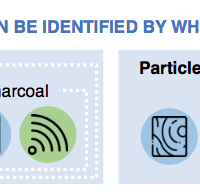Logging approaches key to sustainable forest management
Logging methods are key to the success of sustainable forest management, according to a new study of forestry in Brazil. In ‘Litter and soil biogeochemical parameters as indicators of sustainable logging in Central Amazonia’ by Dr Barbara Bomfim and colleagues, the impact of different logging approaches on a range of forest health indicators are compared. These include canopy cover, seedling density, forest litter and soil composition and compaction.
In one forest operation, foresters use pre-winching, where logs are hydraulically winched with a metal cable by a track-type tractor on to the skid trails, which are permanent and used for numerous felling cycles. “The skidder also does not transit in the forest, allowing natural regeneration to take place while avoiding the soil compaction caused by skidder transit,” said Dr Bomfim in an article on the Voices from developing countries website.
In the second forest operation studied, by contrast, skid trails are relatively temporary and not properly opened. “Here, the skidder follows orange ribbons placed on small trees by forest workers to indicate the best route to access a felled log,” said Dr Bomfim. “This is repeated for every felled tree.” She added that, with this approach, soil compaction caused by the movements of the skidder, which at the first site is limited to trails only, affects a wider area of forest. This can adversely affect natural regeneration and subsequently growth of marketable tree species necessary for economic viability.
Dr Bomfim concludes that ‘future forests need to be increasingly better managed’ and the effects of different logging approaches studied further.
“Assessing and improving sustainable forest management plans in tropical forests is a necessity to ensure their maintenance and functioning in a changing climate,” she said. “Management must consider both the short and long-term impacts of the logging system they use.”




